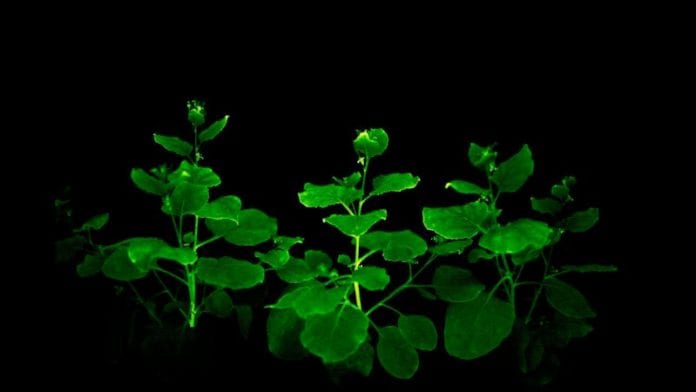Plants are an indispensable part of Earth’s ecology. Ranging from the giant redwoods to the mangroves of Sundarbans, plants not only provide sustenance for the animals in their vicinity but also clean the air, ridding it of harmful dust and releasing Oxygen in the process. The research into the biological structure of plants has been the centrepiece of modern Biology along with the inquiry into animals’ inner workings. The genetic research into the genes of plants has helped transform the way we grow our food and even care for our livestock. We have this research to thank for the lack of mass famines in most of the world.
Geneticists, in their quest to fully understand the molecular as well as macro workings of plants, have created glowing green ones in a laboratory. The unusual glow apart from its obvious aesthetic value could also help add to the understanding of scientists of the inner structure of plants. The preliminary ideas suggest that the activities of different hormones inside plants over their lifetime and across different tissues could be visualized non-invasively using this technique. The internal changes that a plant goes through after being exposed to certain stimuli could also be easily studied using this method.

However, the work is not complete, and the researchers hope to make the plants even brighter and have them pass all the safety regulation tests. If this comes to pass, they expect to bring these plants to the market soon. The glowing plants are not unique, however. Several organisms in nature have been observed to glow. The phenomenon is called ‘bioluminescence’ and has been observed in fireflies and honey fungi. The mechanism of bioluminescence is straightforward. The light that we can observe is the energy released by the action of enzymes on a certain class of chemicals known as luciferins.
The research mentioned above is not the first to have produced glowing flora. Several studies in the past have produced such plants. The research mentioned above is special because the researchers have harnessed the light-emitting properties of fungi. The researchers used the latest techniques in the field of genetics to extract four genes from a bioluminescent mushroom and pasted those genes into a tobacco plant. The genes were successfully added into the tobacco plant, and then they transformed the already present caffeic acid into luciferin. The chemical then starts producing light, and we have glowing tobacco plants.

Other research into glowing plants has utilized other methods to achieve the results. One of the more expensive ones was to deliver the enzymes and luciferin necessary for bioluminescence into the plants using nanoparticles. These methods had a lot of drawbacks and resulted in a weak glow. However, after the successful results of the recent study, things are looking up. The plants glow in the dark and the night as well. This research could have other uses than purely academic pursuits. Some of them include ornamental plants and Christmas lights, as well as bioluminescent street lights.
Further Reading:


